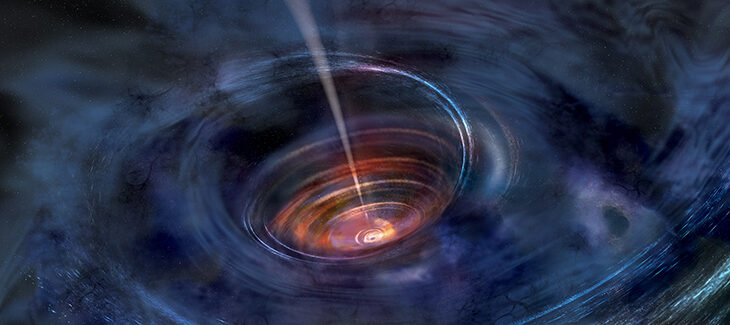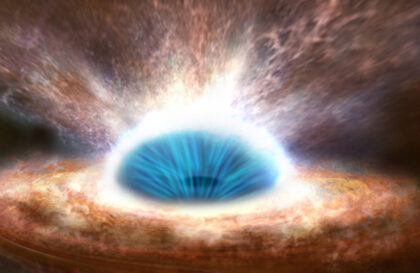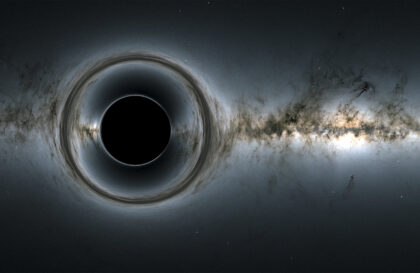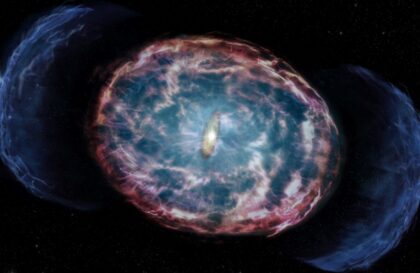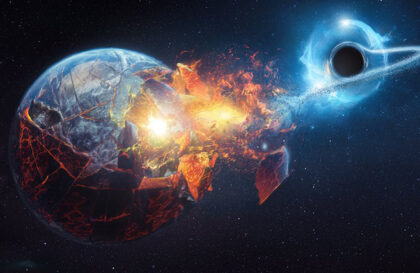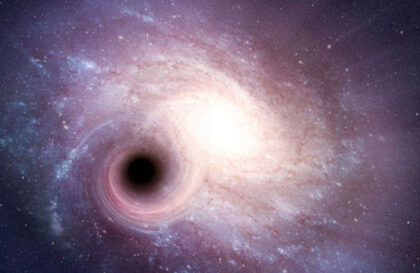In the late 1600s, Isaac Newton determined that gravity depends on mass. His theories were detailed in the book “Principia”. In the 1700s, scientists speculated about the existence of objects with immense gravity, now known as black holes. However, only after Einstein published his theory of relativity in 1915 was the concept of black holes widely acknowledged.
The theory of relativity describes gravity as a curvature of space. A black hole is an area with extreme curvature, akin to a “dip” that forms on a water bed when a heavy object is placed on it. Mass warps space. An immense mass concentrated in a small volume is needed to form a black hole.
When the mass is sufficiently large, its gravitational pull surpasses all other forces, causing it to collapse. This matter contracts into an infinitesimally small point with infinite mass and density, known as a singularity. The singularity warps space-time to such an extent that nothing, including light, can escape its vicinity. Because light cannot emerge from this zone, it’s termed a “black hole”. Around the singularity, conventional physical laws break down, making it a focal point of intense scientific research.
In 1916, Karl Schwarzschild determined the radius of a black hole, known as the event horizon, which is dependent on the black hole’s mass. This radius reflects the distance from the singularity where light can exit the region. Anything that falls within this radius disappears and cannot leave the black hole. The matter that falls in breaks down into subatomic particles and accumulates in the singularity, increasing the size of the event horizon.
Contrary to the popular belief that matter entering a black hole is irrevocably lost, in 1974, Stephen Hawking proposed that black holes might emit radiation, subsequently named after him. This implies that black holes can gradually radiate their absorbed matter, albeit extremely slowly. The theory suggests that even a small black hole could evaporate by emitting radiation, but this would take an unimaginably long time—on the order of 1067 years.
Credit: Communicate Science
There are two main classes of black holes: stellar mass, with a mass tens of times greater than the Sun, and supermassive, with a mass ranging from 100,000 to billions of solar masses, located at the centers of large galaxies. A suspected intermediate class of black holes also ranges from 100 to 10,000 solar masses. The LIGO gravitational observatory detected the most convincing evidence of their existence on May 21, 2019, when gravitational waves from the merger of two black holes were detected, resulting in a black hole with a mass of 142 Suns.
Stars with a mass exceeding 20 solar masses, having exhausted their nuclear fuel, collapse, forming a black hole if their core is three times the mass of the Sun. The origin of supermassive black holes is not well understood, but they have existed since the early days of the galaxy. Black holes can grow by accumulating matter and merging with other black holes.
Credit: NASA’s Goddard Space Flight Center
In 2019, astronomers used the Event Horizon Telescope (EHT) to capture the first image of a black hole in the M87 galaxy, weighing in at 6 billion solar masses.
NASA’s space telescopes “Hubble”, “Chandra”, “Swift”, NuSTAR, and NICER, as well as other missions, continue to measure black holes and their surroundings.
Banner image: NASA/Swift/Aurore Simonnet, Sonoma State Univ
Image credit:
https://svs.gsfc.nasa.gov
http://www.communicatescience.eu
https://svs.gsfc.nasa.gov
